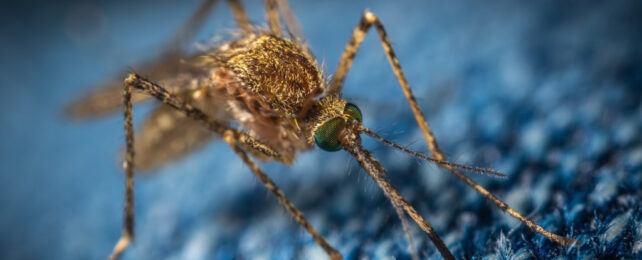Scientists have long warned that climate change would push species into new territories, with the march of disease-carrying mosquitos among their gravest concerns.
But this is not some theoretical future threat. Mosquitos that transmit malaria have been moving into warming areas for over a century in Africa, according to a new study.
Georgetown University biologist Colin Carlson and colleagues used one of the most comprehensive datasets ever compiled by medical entomologists to track the outer reaches of mosquito distribution in Africa over 120 years.
The data allowed the researchers to estimate the range limits of 22 species of Anopheles mosquitos between 1898 and 2016. In that time, the world has warmed by at least 1.2 degrees Celsius, opening new areas suitable to mosquitos.
As a result, Anopheles mosquitos have spread southward by 4.7 kilometers (nearly 3 miles) every year, and risen 6.5 meters in elevation each year.
That's further and faster than estimates from a 2011 study which reported that across the board, terrestrial species were moving poleward by 1.7 kilometers a year and upslope by 1.1 meters each year – a rate that was, at that time, roughly two to three times faster than previously thought.
In fact, this new study suggests that African Anopheles mosquitos have moved so far that, on average, they are now found 500 kilometers (310 miles) closer to the south pole and 700 meters (2,300 feet) farther uphill than they were at the turn of the 20th century.
According to Carlson, this is some of the first "hard historical evidence" that mosquitos are already on the move with rising temperatures – and have been for quite from time.
"This is exactly what we would expect to see if climate change is helping these species reach colder parts of the continent," says Carlson.
"Up to this point," Carlson tells ScienceAlert, "most work on climate change and malaria has focused on the dynamics of malaria transmission itself. Here, we're taking a step back and saying, climate change might be independently affecting mosquitos and spreading them around before we even get to the malaria part of the story."
Mosquitos are flighty: they can travel hundreds of kilometers overnight with wind currents. But these cold-blooded creatures are also sensitive to temperature changes, humidity, and rainfall, hence why local climate dictates where they can survive.
It's expected that climate change will not only expand the range of mosquitos but also lengthen the time each year when they are out in force.
Noting that this new study only tracked mosquitos in the genus Anopheles, Carlson says other mosquito species are probably moving in a similar way, but only by collecting data can we begin to understand just how far they may go.
"We tend to assume that these shifts are happening all around us, but the evidence base is fairly limited," says Carlson.
As for Anopheles mosquitos, retracing their spread through history could help to explain shifting patterns of malaria transmission in the African region. It could also help clarify long-standing debates over why malaria cases have risen in highland east Africa, specifically.
Some researchers have argued that the resurgence of malaria in highland areas is better explained by lapsed control programs and growing drug resistance, whereas others say rising temperatures are part of the potent mix of factors that influence malaria transmission, and one we need to recognize.
"If [Anopheles] mosquitoes are spreading into these areas for the first time," Carlson argues, then "it might help explain some recent changes in malaria transmission that have otherwise been hard to trace back to climate."
All of this information plays an important role in the allocation of healthcare resources, which researchers say should be directed to the fringes of transmission zones where healthcare systems may be underprepared to deal with the increasing disease risk.
Of course, it's not just malaria that we should be worried about. Carlson's past research shows that Aedes mosquitos – which are vectors for dengue, chikungunya, and Zika viruses – are also on the move.
In the worst-case scenario, nearly a billion people could be threatened with new exposure to virus transmission from Aedes mosquitos as the planet heats up to add to the billions more at risk from malaria.
Less is known, however, about the impact of climate change on Aedes mosquitos than on Anopheles so we best get to grips with how the situation is changing – with increased surveillance to monitor for disease outbreaks.
"We should be looking for species on the move," Carlson tells ScienceAlert, "and thinking about that as a facet of how we prepare for the health impacts of climate change."
The research has been published in Biology Letters.
